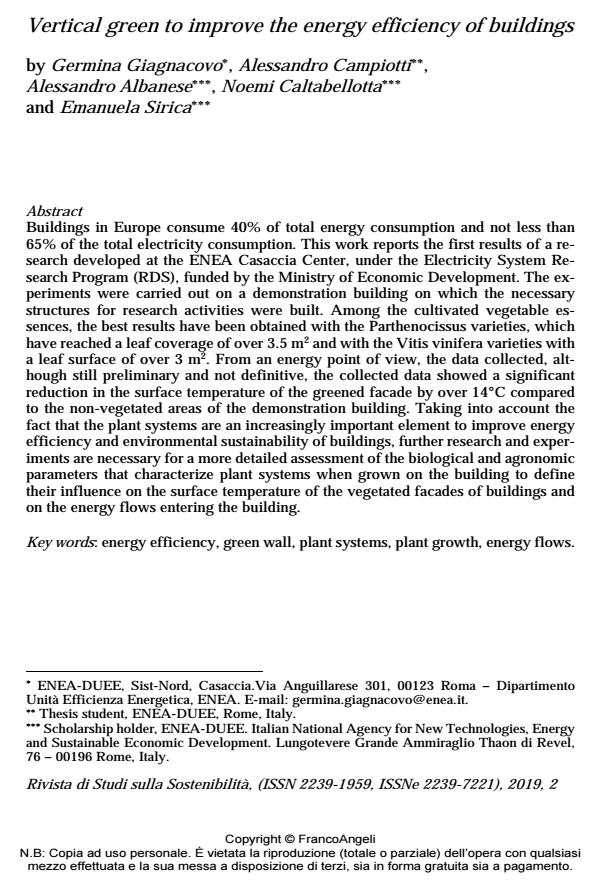Vertical green to improve the energy efficiency of buildings
Titolo Rivista RIVISTA DI STUDI SULLA SOSTENIBILITA'
Autori/Curatori Germina Giagnacovo, Alessandro Campiotti, Alessandro Albanese Ginammi, Noemi Caltabellotta, Emanuela Sirica
Anno di pubblicazione 2020 Fascicolo 2019/2 Suppl.
Lingua Inglese Numero pagine 15 P. 45-59 Dimensione file 464 KB
DOI 10.3280/RISS2019-002-S1004
Il DOI è il codice a barre della proprietà intellettuale: per saperne di più
clicca qui
Qui sotto puoi vedere in anteprima la prima pagina di questo articolo.
Se questo articolo ti interessa, lo puoi acquistare (e scaricare in formato pdf) seguendo le facili indicazioni per acquistare il download credit. Acquista Download Credits per scaricare questo Articolo in formato PDF

FrancoAngeli è membro della Publishers International Linking Association, Inc (PILA)associazione indipendente e non profit per facilitare (attraverso i servizi tecnologici implementati da CrossRef.org) l’accesso degli studiosi ai contenuti digitali nelle pubblicazioni professionali e scientifiche
Buildings in Europe consume 40% of total energy consumption and not less than 65% of the total electricity consumption. This work reports the first results of a research developed at the ENEA Casaccia Center, under the Electricity System Research Program (RDS), funded by the Ministry of Economic Development. The experiments were carried out on a demonstration building on which the necessary structures for research activities were built. Among the cultivated vegetable essences, the best results have been obtained with the Parthenocissus varieties, which have reached a leaf coverage of over 3.5 m2 and with the Vitis vinifera varieties with a leaf surface of over 3 m2. From an energy point of view, the data collected, although still preliminary and not definitive, the collected data showed a significant reduction in the surface temperature of the greened facade by over 14°C compared to the non-vegetated areas of the demonstration building. Taking into account the fact that the plant systems are an increasingly important element to improve energy efficiency and environmental sustainability of buildings, further research and experiments are necessary for a more detailed assessment of the biological and agronomic parameters that characterize plant systems when grown on the building to define their influence on the surface temperature of the vegetated facades of buildings and on the energy flows entering the building.
Parole chiave:Energy efficiency, green wall, plant systems, plant growth, energy flows
Germina Giagnacovo, Alessandro Campiotti, Alessandro Albanese Ginammi, Noemi Caltabellotta, Emanuela Sirica, Vertical green to improve the energy efficiency of buildings in "RIVISTA DI STUDI SULLA SOSTENIBILITA'" 2 Suppl./2019, pp 45-59, DOI: 10.3280/RISS2019-002-S1004